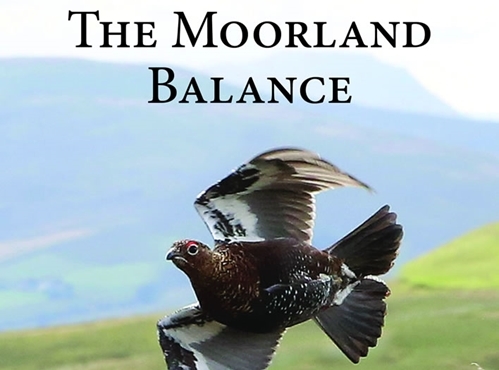Key points
- Lapwing, golden plover, curlew, red grouse and meadow pipit bred on average three times more successfully when predator control was performed.
- As a result, the populations increased in subsequent years.
- In the absence of predator control, the populations declined.
Background
 Control of generalist predators such as foxes and crows is commonly performed to protect livestock and game birds, but its potential to contribute to conservation of other wildlife is not well understood. Birds that nest on the ground such as curlew, lapwing and golden plover are particularly vulnerable to predation, and long-term fox and crow populations increases in recent decades may have increased predation pressure.
Control of generalist predators such as foxes and crows is commonly performed to protect livestock and game birds, but its potential to contribute to conservation of other wildlife is not well understood. Birds that nest on the ground such as curlew, lapwing and golden plover are particularly vulnerable to predation, and long-term fox and crow populations increases in recent decades may have increased predation pressure.
What they did
Fletcher and colleagues ran an experiment for eight years to look at the effects of controlling predators on five species of ground-nesting birds that breed on moorland. They included four different moorland sites, in two pairs. In one pair, one site received predator control for the whole experiment and the other did not. In the other pair, one site received predator control for four years and one did not, then the sites were swapped for the remaining four years of the experiment. On all four sites the numbers of breeding birds and estimates of breeding success were made.
This approach allowed them to compare how the birds did on the same piece of moorland when predator control was or was not happening. They could also compare between the two areas that did and did not receive predator control on the same year.
What they found
Predator control techniques reduced the abundance of foxes by 43% and crows by 78%, but no change was detected in already low stoat and weasel abundance.
Birds were monitored to see how many breeding pairs fledged young each year – this means that the pair successfully reared at least one of their chicks until it was able to fly.
For lapwing, golden plover and curlew, more than three times as many pairs fledged young when predators were controlled than when they were not. For meadow pipits, twice as many pairs fledged young.
| Bird species |
|
Birds fledging young when
predators were not controlled |
|
Birds fledging young when
predators were controlled |
| Lapwing |
|
19% |
|
57% |
| Golden plover |
|
18% |
|
75% |
| Curlew |
|
15% |
|
51% |
| Meadow pipit |
|
28% |
|
52% |
During the period of predator control, there was an increase in breeding success that led to a significant increase in numbers of lapwing and golden plover the following year. As curlew take longer to mature to breeding age, a three-year lag period was allowed, and after this a similar positive response to predator control was detected. When predators were not controlled, the abundance of these species dropped – there were fewer birds each year than there had been the year before. The table below shows the size of these changes. They did not detect any effect of predator control on meadow pipit, skylark or snipe.
| |
|
Change per year |
| Bird species |
|
Population trend when
predators not controlled |
|
Population trend when
predators controlled |
| Lapwing |
|
36% decline |
|
66% increase |
| Golden plover |
|
29% decline |
|
36% increase |
| Curlew |
|
17% decline |
|
14% increase |
What does this mean?
In summary, when predators were controlled, lapwing, golden plover, curlew, meadow pipit and red grouse all bred better than on the same moorland when predators were not controlled. For lapwing, golden plover, curlew and red grouse this led to more birds breeding on the moor in subsequent years. Where habitat is favourable, the application of predator control may be important for conserving some ground-nesting bird species.
Read the original abstract
Fletcher, K.L., Aebischer, N.J., Baines, D., Foster, R., & Hoodless, A.N. (2010). Changes in breeding success and abundance of ground-nesting moorland birds in relation to the experimental deployment of legal predator control. Journal of Applied Ecology, 47: 263-272.

Buy our essential book for just £8.95
Based on the GWCT's submission to the Westminster debate on grouse shooting in late 2016, this handy paperback book is a go-to guide for those with an interest in the British uplands and is based on years of research and practical experience, both from the Trust and other parties.
Buy now >